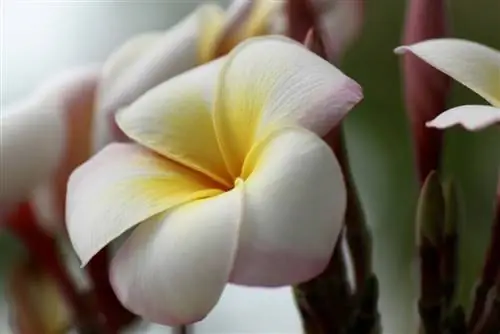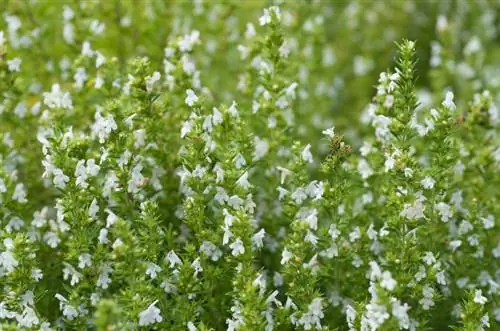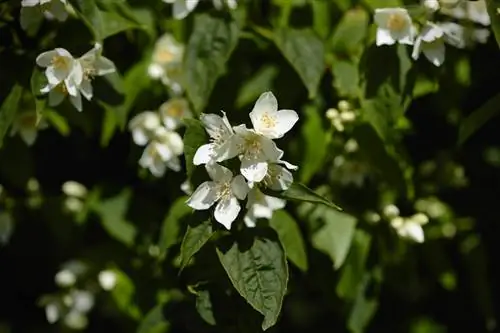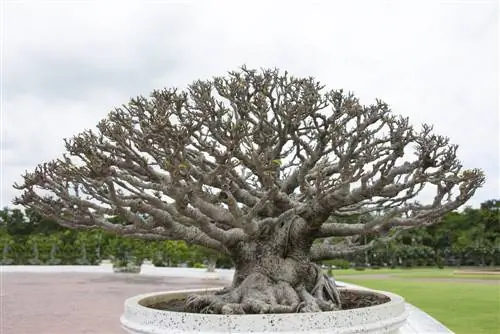- Author admin [email protected].
- Public 2023-12-16 16:46.
- Last modified 2025-01-23 11:21.
Frangipani or Plumeria is a succulent from southern regions that is mostly cultivated indoors here. While Plumeria rubra is comparatively easy to care for, you have to show sensitivity when caring for Plumeria alba, especially when watering.

How do you properly care for a Frangipani Alba?
When caring for Plumeria Alba, correct watering is particularly important: always keep the substrate slightly moist and avoid waterlogging. Fertilize with a special frangipani fertilizer from spring until flowering, keeping an eye out for pests and diseases. Suitable wintering at at least 15 degrees without drafts is also essential.
How do you water Plumeria alba correctly?
All types of frangipani do not tolerate waterlogging. Plumeria alba is particularly sensitive here. Therefore, make sure that the substrate is always slightly moist in summer but never wet. Immediately pour off any excess water from the saucer or planter.
Never water Plumeria alba from above. The leaves must not be wetted with water.
What do you have to consider when fertilizing?
The Plumeria alba doesn't get too many nutrients. Therefore, only fertilize from spring until flowering begins. Use a special fertilizer for frangipani.
When can you repot Plumeria alba?
You should not repot Plumeria alba too often or too early. Wait at least two years before moving for the first time. Younger plants need a new pot every two to three years; for older frangipanis, repotting them every five years is enough.
After repotting, Plumeria alba is not fertilized for several months.
How do you make frangipani branch?
Branching occurs naturally with each flower. If you want the houseplant to branch more, cut the shoot tips in spring.
What diseases and pests do you need to watch out for?
Frangipani is generally susceptible to diseases and pests. Most diseases can be prevented through proper watering.
Pests often plague Plumeria alba when the humidity at the location is very low. The most harmful infestations are spider mites and thrips. Fight these pests immediately.
How do you overwinter Plumeria alba correctly?
- Bright, not too cool location
- no drafts
- do not fertilize
- water little or not at all
Even in winter, the temperatures at the location should not fall below 15 degrees.
Tip
Plumeria alba is rarely available commercially. This variety is particularly popular because of its flowers, which exude a particularly strong scent.






